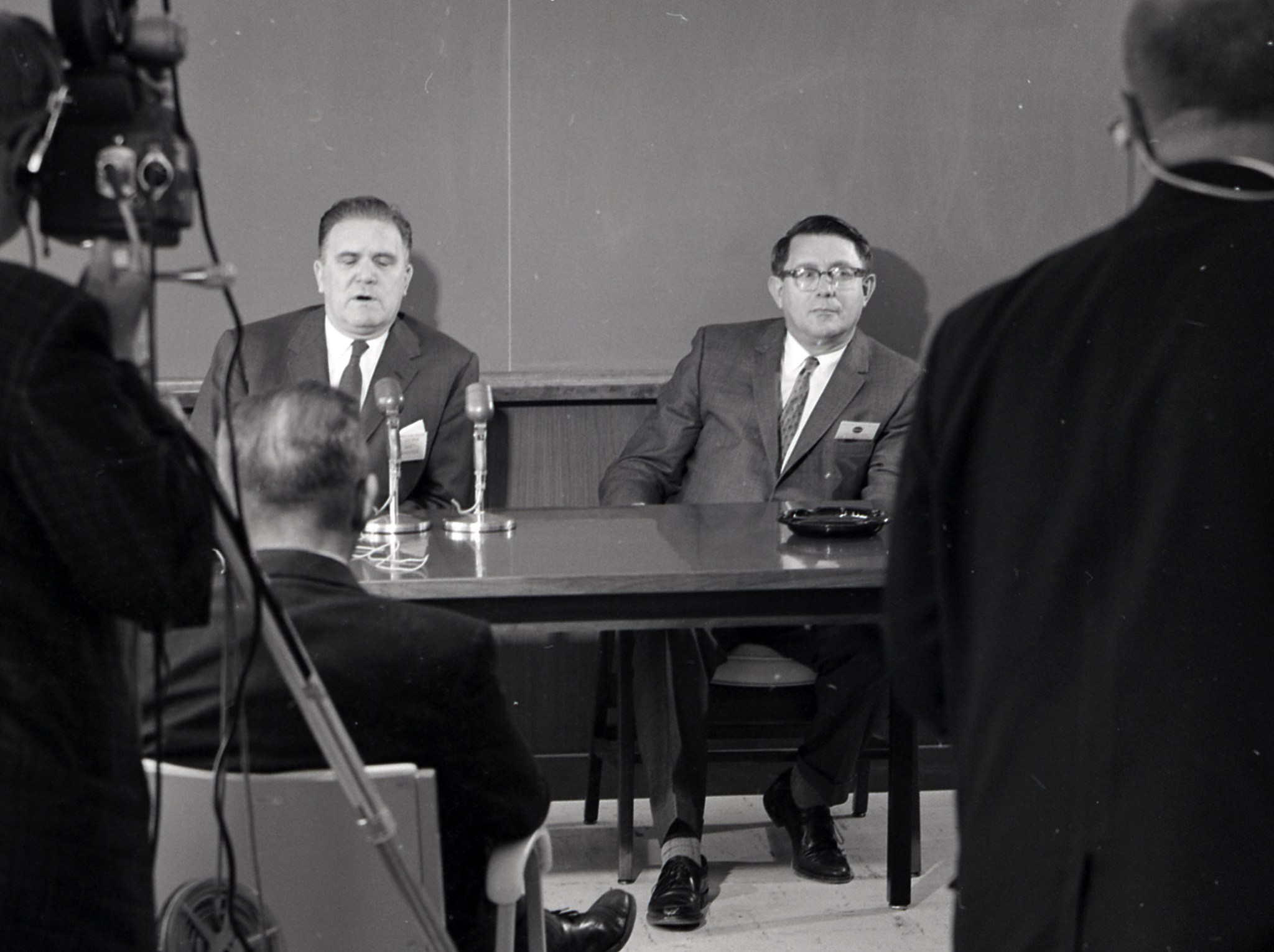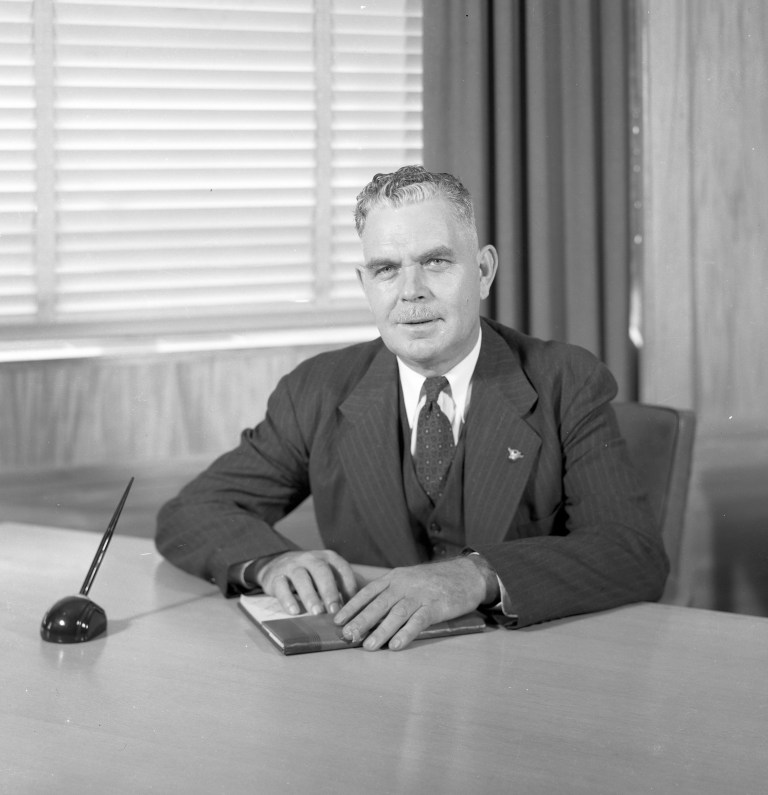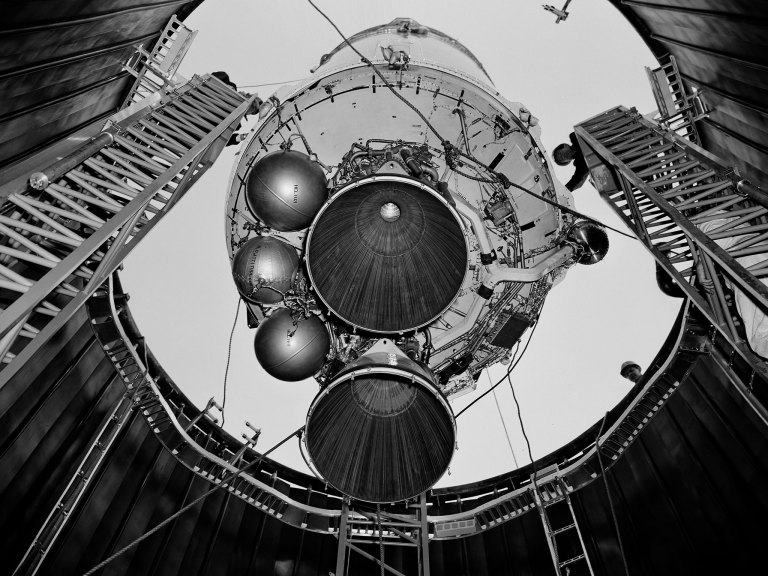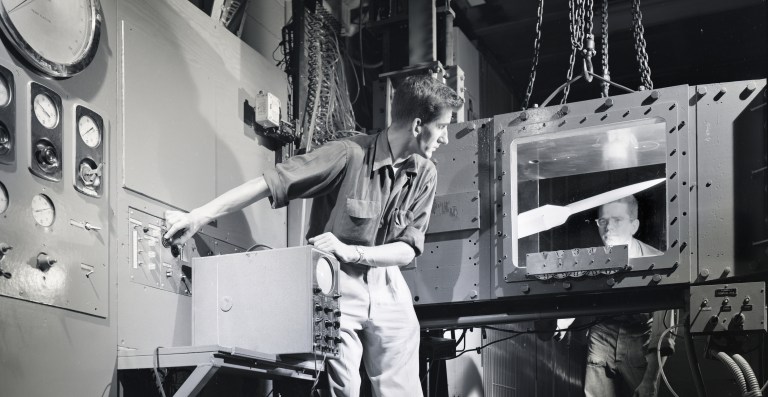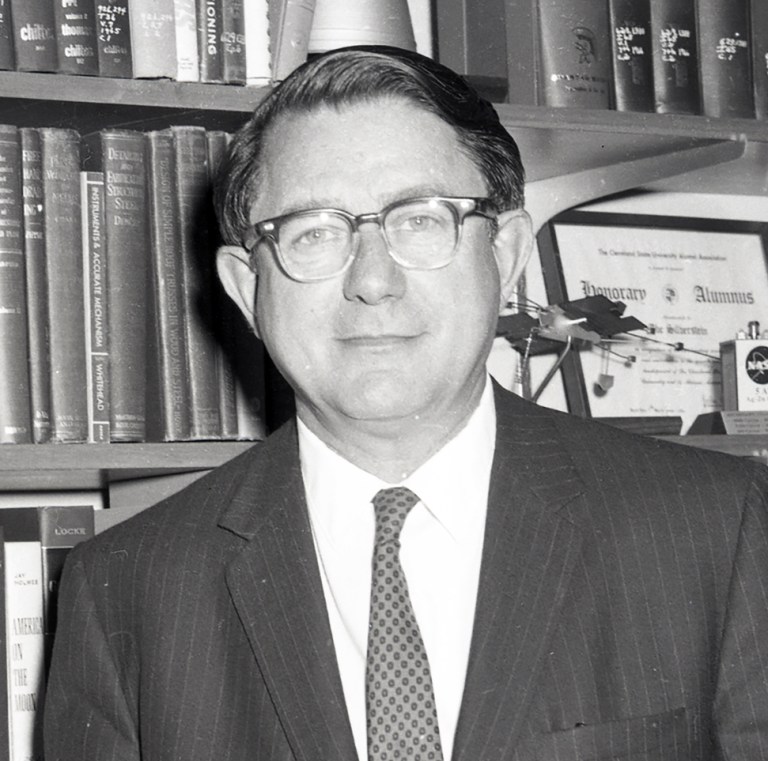
Abe Silverstein
Former Center Director, Glenn Research Center, Nov. 1, 1961 until Oct. 31, 1969
Abe Silverstein served as center director at NASA’s Lewis Research Center (today, NASA Glenn) from November 1, 1961 until October 1969. During that time, the center expanded the scope of its research, the number of employees, and testing capabilities to meet the demands of NASA’s space program and civilian aviation needs. Silverstein’s eight years as director, however, were just one chapter in a 40-year career that had lasting impacts on both the center and the agency.
Silverstein, a native of Terre Haute, Indiana, earned a bachelors (1929) and masters (1934) degrees in mechanical engineering (1929) from Rose Polytechnic Institute. After taking a civil service examination in 1929, he accepted a position at the National Advisory Committee for Aeronautics (NACA)’s Langley Memorial Aeronautical Laboratory where he contributed to the design of the Full Scale Tunnel. Silverstein conducted a series of tests in the tunnel during the 1930s, then oversaw the NACA’s drag cleanup of military aircraft in the tunnel in the early 1940s.
Silverstein transferred to the NACA’s new Aircraft Engine Research Laboratory (today, NASA Glenn) in the fall of 1943 to manage operations of the new Altitude Wind Tunnel. There he oversaw testing of the nation’s first jet engines and R-3350 engines for the B-29 bomber. Silverstein was promoted to chief of the Wind Tunnels and Flight Division in 1945 and helped the design the laboratory’s first supersonic wind tunnel (1945), as well the much larger 8-by 6-foot (1949) and 10-by 10-foot supersonic tunnels (1956).
After being promoted to chief of research in 1949 and then associate director in 1952, Silverstein was responsible for all of the laboratory’s research and facilities. During this period, he expanded work on high-energy fuels and nuclear propulsion and pushed for the acquisition of property to construct a remote testing facility to support research in these fields. The site, located in Sandusky, Ohio, became Plum Brook Station (today, NASA’s Neil Armstrong Test Facility).
Silverstein was among those who viewed rocket and missile technology as an extension of the NACA’s traditional aeronautics focus. Following the Soviet Union’s launch of Sputnik I in 1957, Silverstein made a number of recommendations along these lines, including the establishment of an NACA space flight laboratory. Silverstein transferred to NACA Headquarters in the spring of 1958, where he played a key role in establishment of the new NASA space agency.
As chief of NASA’s Space Flight Programs, he managed all mission planning, spacecraft design, and launch operations for all agency space missions. This included the work of the Space Task Group. In this role, Silverstein named both the Mercury and Apollo programs. He also chaired the Saturn Vehicle Team, which made the critical determination that the upper stages of the Saturn rocket should be fueled by liquid hydrogen. Silverstein was also among a small group of NASA leaders who advised President John Kennedy in early 1961 that a lunar landing was feasible. Once plans for the Apollo program were established, the NASA Administrator James Webb granted Silverstein’s request to fill the center director role at NASA Lewis following the retirement of Raymond Sharp.
Silverstein formally assumed his role as center director on November 1, 1961. The most pressing issue at the time was the recruitment and hiring of hundreds of new employees to support NASA’s recently announced plans to send humans to the Moon. Silverstein also established new contracting and cost reduction strategies for industry partners that were developing hardware for NASA.
In September 1962, NASA Lewis was assigned responsibility for the Centaur upper-stage rocket. NASA was relying on Centaur to send spacecraft to the explore landings sites on the Moon prior to the Apollo missions. Centaur, the first operational stage to be powered by liquid hydrogen, failed during its first launch attempt in May 1962. Silverstein, who had urged the agency to use liquid hydrogen just a few years earlier, personally oversaw the intensive, time-critical effort to get Centaur operational. He was hands-on supervisor who was aware of all facets of the work and did not hesitate to provide engineering recommendations.
The next Centaur launch attempt in November 1963 was successful. Silverstein’s close oversight helped ensure that the program remained on schedule to successfully launch seven Surveyor missions to the Moon. Centaur has since sent scores of spacecraft, satellites, and observatories into space and remains in use today.
Silverstein believed that each piece of space hardware should be tested in the conditions in which it would operate. As such, he was a strong advocate in the early 1960s for the creation of the Space Propulsion Research Facility (B-2) and the Space Power Chamber at Plum Brook Station. The former could fire full-size upper-stage vehicles in a continuous vacuum environment; the latter was the nation’s largest vacuum chamber. These world class facilities remain in use today.
In the mid-1960s, Silverstein began redirecting the center’s research back to aeronautics. This included the initiation of a series of programs to reduce engine noise and emissions, as well as support of the proposed supersonic transport . The center added a low-speed leg to the 8-by 6-Foot Supersonic Wind Tunnel and began construction of two new altitude chambers for testing aircraft engines.
In October 1969, shortly after the Apollo 11 lunar landing, Silverstein announced that he would be retiring after 40 years with NACA and NASA. NASA Administrator Thomas Paine stated, “Few have made so great a contribution to our national space effort as Dr. Silverstein.”
In the years leading up to his retirement, Silverstein embarked on a number of community-based endeavors, including serving as a trustee or board member for an array of local institutions. Following retirement, he served as a technical advisor for a proposal to build a jetport on Lake Erie and was director of environmental planning at Republic Steel. Silverstein died on June 1, 2001, at the age of 92.
Silverstein received a plethora of awards over his years, including several honorary degrees, NASA’s Outstanding Leadership and Exceptional Service medals, the Guggenheim Medal. In 1994, the center instituted the Abe Silverstein Award and renamed the 10- by 10-foot tunnel the Abe Silverstein 10- by 10-Foot Supersonic Wind Tunnel. In 2015, Silverstein was inducted into the NASA Glenn Hall of Fame and the National Aviation Hall of Fame.
Additional Resources


























